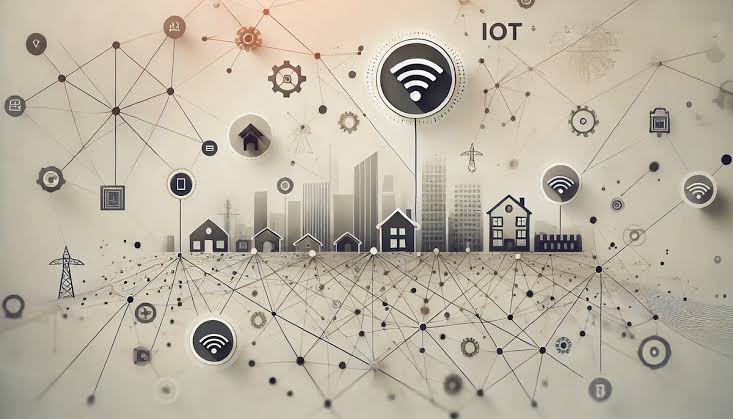The Internet of Things (IoT) has revolutionized the way we interact with technology, connecting billions of devices worldwide to form a complex, interconnected ecosystem. On the other hand, Network Artificial Intelligence (AI) has emerged as a transformative force capable of analyzing and managing vast amounts of data with precision and efficiency. When these two groundbreaking technologies intersect, they unlock unprecedented opportunities for smart connectivity, paving the way for innovative solutions in various domains.
Understanding IoT and Network AI
IoT refers to a network of interconnected devices that communicate with each other and exchange data through the internet. These devices, ranging from smart home appliances and wearable health trackers to industrial sensors and autonomous vehicles, generate vast amounts of data in real-time. The ability to harness this data and make intelligent decisions is where AI steps in.
Network AI involves deploying artificial intelligence techniques within network infrastructures. This includes machine learning algorithms, deep learning models, and natural language processing to optimize network performance, predict failures, enhance security, and manage resources dynamically. By integrating AI into IoT networks, we achieve a synergistic relationship that enhances the functionality, scalability, and efficiency of IoT ecosystems.
The Role of AI in IoT Connectivity
IoT generates an overwhelming volume of data, often referred to as “big data.” However, the sheer volume, variety, and velocity of this data pose challenges in terms of storage, processing, and decision-making. Network AI addresses these challenges by enabling IoT systems to process data locally (edge computing) or in the cloud, derive actionable insights, and make autonomous decisions.
Improved Decision-Making
AI algorithms analyze IoT data to provide actionable insights. For instance, in a smart city, IoT sensors can monitor traffic patterns, and AI can analyze this data to optimize traffic flow, reduce congestion, and improve air quality.
Enhanced Security
IoT networks are highly susceptible to cyberattacks due to their decentralized nature. AI enhances security by detecting anomalies, identifying potential threats, and implementing countermeasures in real time. For example, AI-driven intrusion detection systems can monitor network traffic and block malicious activities before they cause harm.
Predictive Maintenance
In industrial IoT (IIoT), AI algorithms can predict equipment failures by analyzing sensor data. This proactive approach minimizes downtime, reduces maintenance costs, and ensures operational efficiency.
Efficient Resource Allocation
Network AI optimizes the use of resources such as bandwidth, power, and storage. For example, in smart grids, AI can analyze energy consumption patterns and optimize electricity distribution to reduce waste and lower costs.
Applications of IoT and Network AI
The integration of IoT and Network AI has transformative implications across various sectors:
Smart Homes
AI-powered IoT devices like thermostats, lighting systems, and security cameras create personalized and energy-efficient living spaces. These systems learn user preferences and adapt accordingly, providing comfort and convenience.
Healthcare
IoT devices such as wearables and remote patient monitoring systems generate valuable health data. AI analyzes this data to provide real-time diagnostics, alert healthcare providers to potential issues, and enhance patient outcomes.
Agriculture
IoT sensors monitor soil conditions, weather patterns, and crop health. AI processes this data to provide insights that help farmers optimize irrigation, apply fertilizers accurately, and predict harvest times, increasing agricultural productivity.
Transportation
Autonomous vehicles rely on IoT sensors and AI to navigate roads, avoid obstacles, and make decisions in real time. Similarly, AI-driven traffic management systems improve public transportation efficiency and reduce congestion.
Retail
IoT-enabled devices like smart shelves and RFID tags track inventory in real time. AI analyzes consumer behavior, optimizes product placement, and personalizes shopping experiences.
Challenges in Integrating IoT and Network AI
While the intersection of IoT and Network AI offers immense potential, it also comes with challenges that must be addressed:
- Data Privacy: The collection and analysis of sensitive data by IoT devices raise significant privacy concerns. Robust data encryption and compliance with privacy regulations are essential.
- Scalability: IoT ecosystems are growing exponentially, and ensuring that AI systems can scale efficiently to handle increased data volumes is critical.
- Interoperability: IoT devices often use different communication protocols and standards, creating compatibility issues. Establishing universal standards can facilitate seamless integration.
- Energy Consumption: The processing power required for AI algorithms and IoT devices can lead to high energy consumption. Developing energy-efficient AI models and devices is crucial.
The Future of IoT and Network AI
The convergence of IoT and Network AI is still in its early stages, but the future holds immense promise. As 5G technology becomes more widespread, IoT devices will benefit from faster, more reliable connectivity, enabling real-time data exchange and AI-driven decision-making on a larger scale. Furthermore, advancements in edge AI—where AI processing occurs directly on devices—will reduce latency and improve the efficiency of IoT systems.
In addition, the development of federated learning, where AI models are trained across decentralized devices while maintaining data privacy, will further enhance the capabilities of IoT networks. This approach enables devices to collaborate and learn from each other without sharing raw data, addressing privacy concerns and improving performance.
Conclusion
The intersection of IoT and Network AI represents a transformative shift in how we connect, communicate, and make decisions. By leveraging AI’s analytical power and IoT’s data-generating capabilities, we can create smarter, more efficient, and more sustainable systems across various domains. However, realizing this vision requires addressing challenges related to privacy, scalability, and interoperability. With continued innovation and collaboration, the fusion of IoT and Network AI will unlock the full potential of smart connectivity, revolutionizing industries and enhancing the quality of life for people worldwide.
